
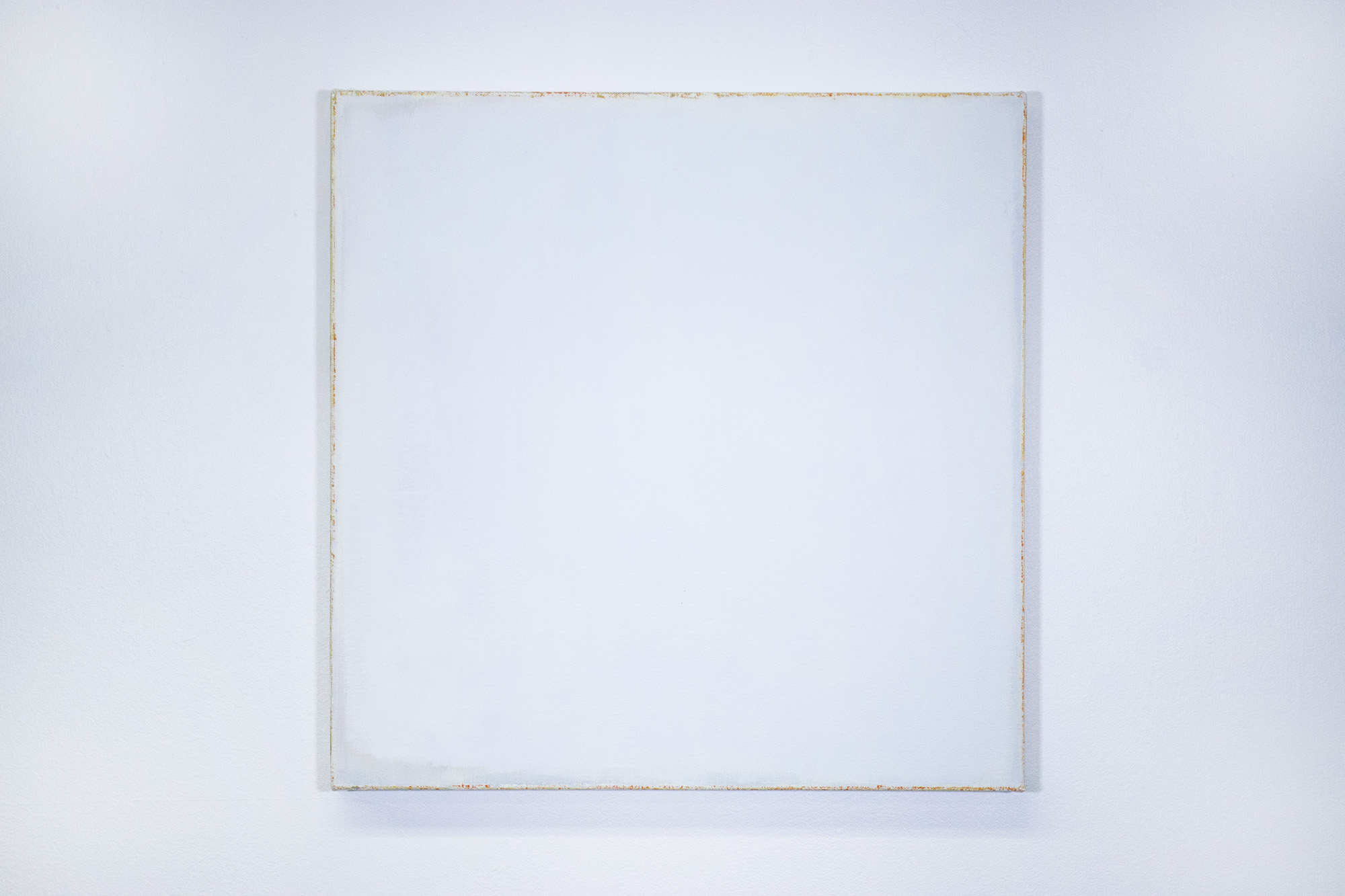
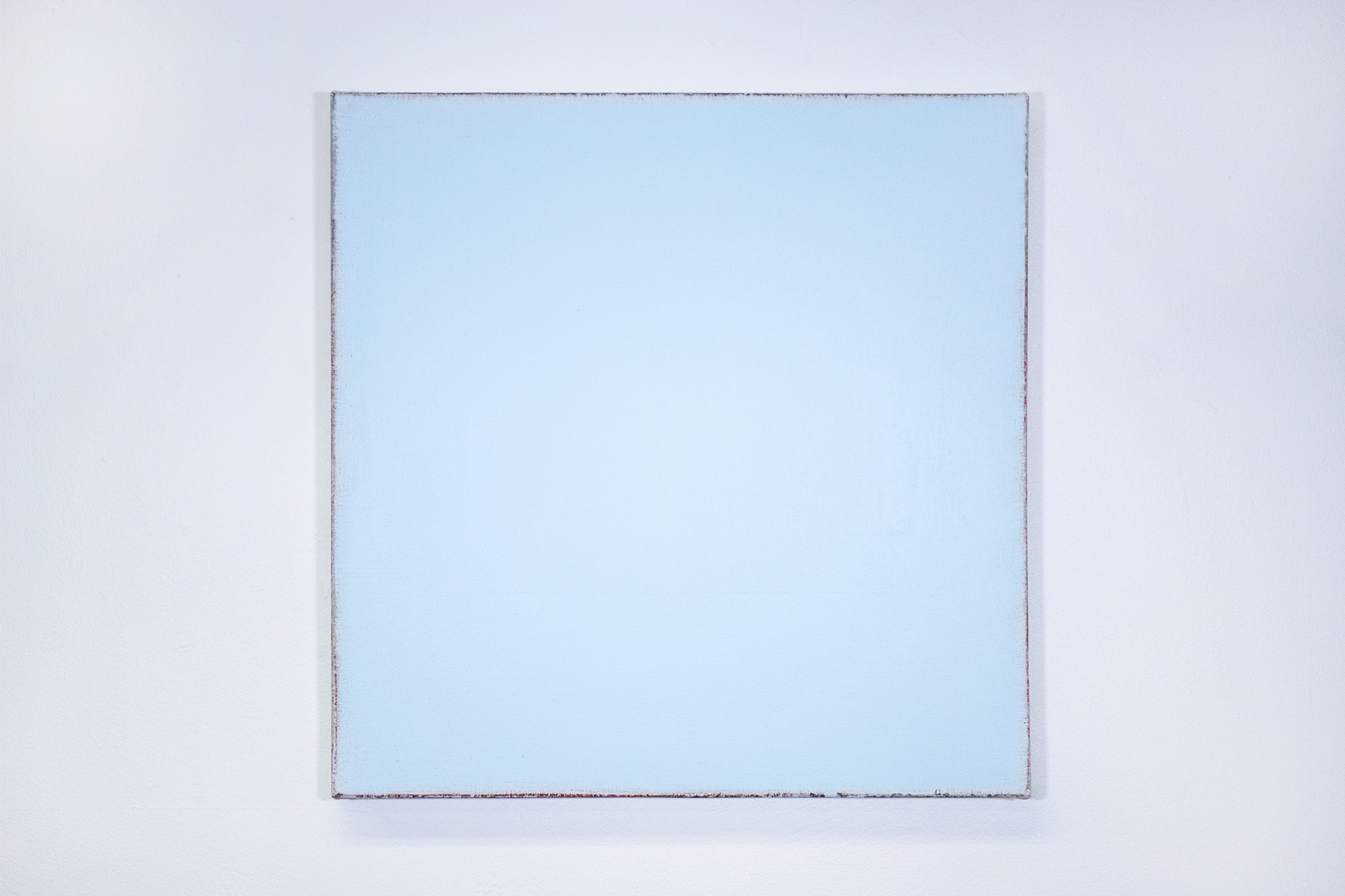
















Beetle in a box, also known as the private language argument, was coined by the Austrian philosopher Ludwig Wittgenstein to explain the difficulty that human beings have to understand what goes through the minds of others. This, because when we express ourselves in public, thoughts are inevitably mediated by language or other forms of communication. So this work, composed of 10 paintings that together and stacked fit in a yellow cubic box, tries precisely to reflect on this paradox. That is why once out of the box, they do not have a single way to be installed, but, on the contrary, they respond to a puzzle game in which the wall and an imaginary grid of 4 rows and 6 columns, serve as support. The 10 paintings were done with all the remainings acrylics that I used during a 2 years MFA program at the Painting and Drawing department of The School of the Art Institute of Chicago. Symbolically this condenses all that academic experience into layers and layers of paint that I could travel with.
Artbo (Bogotá art fair)
Artbo (Bogotá art fair)










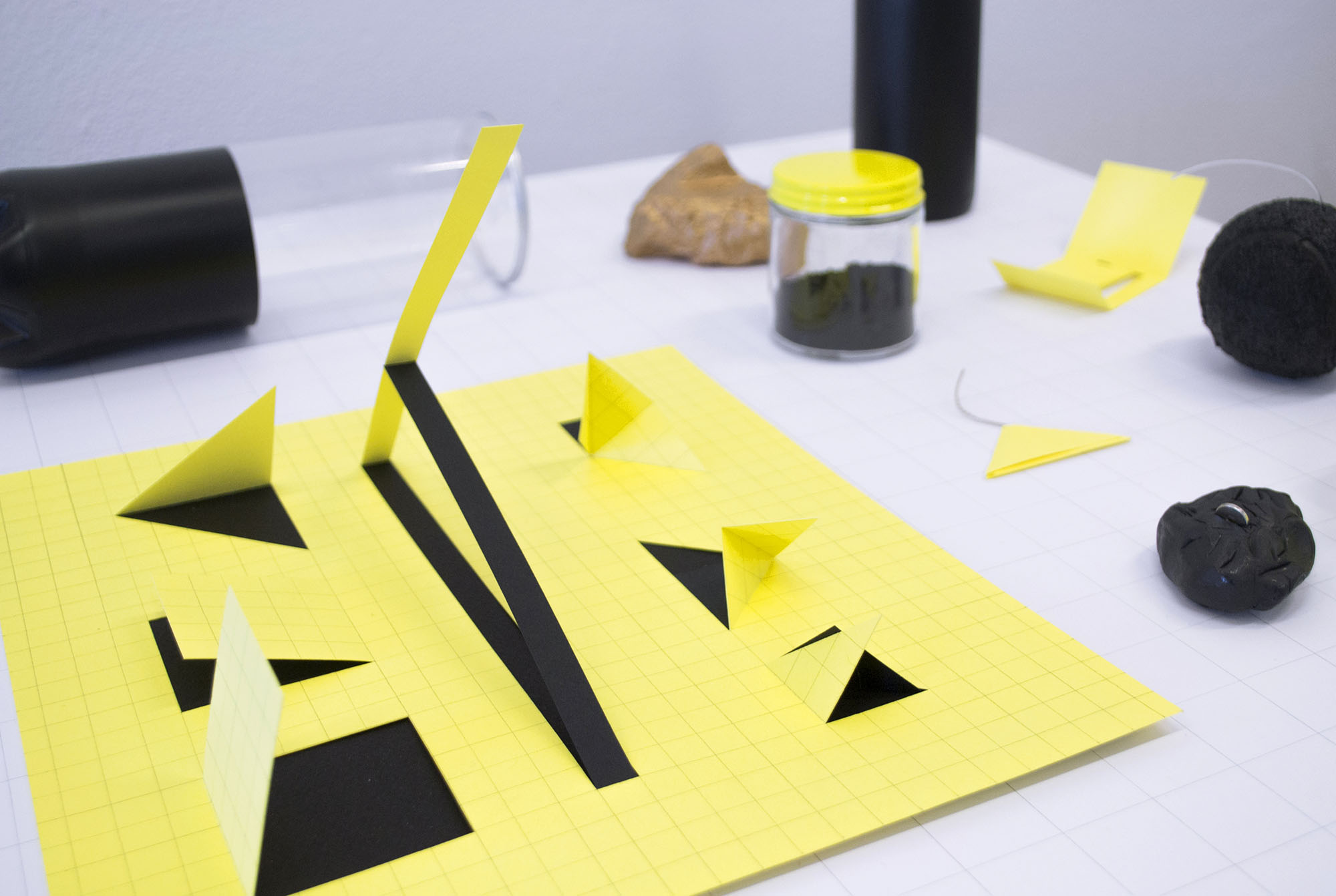




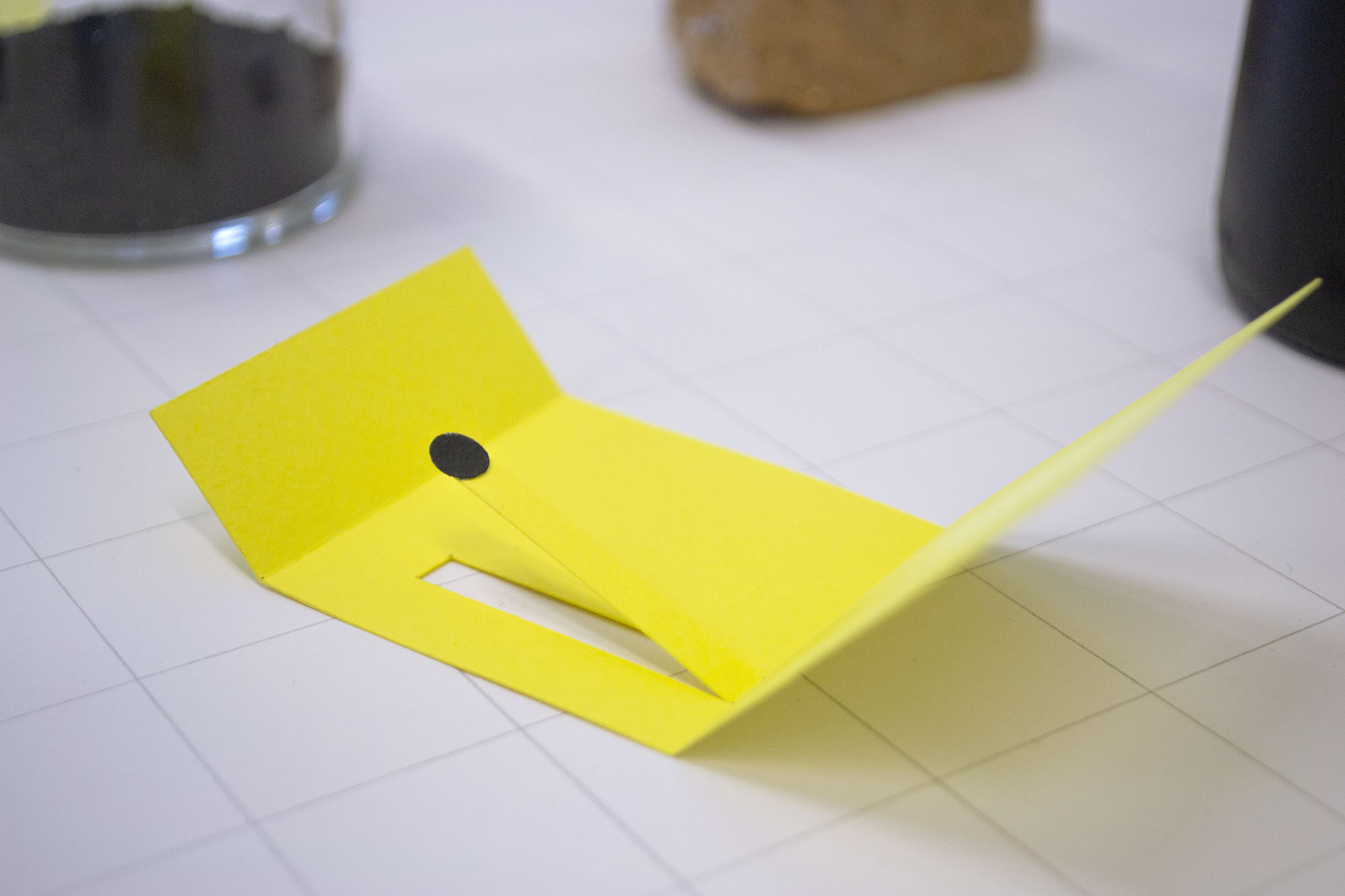





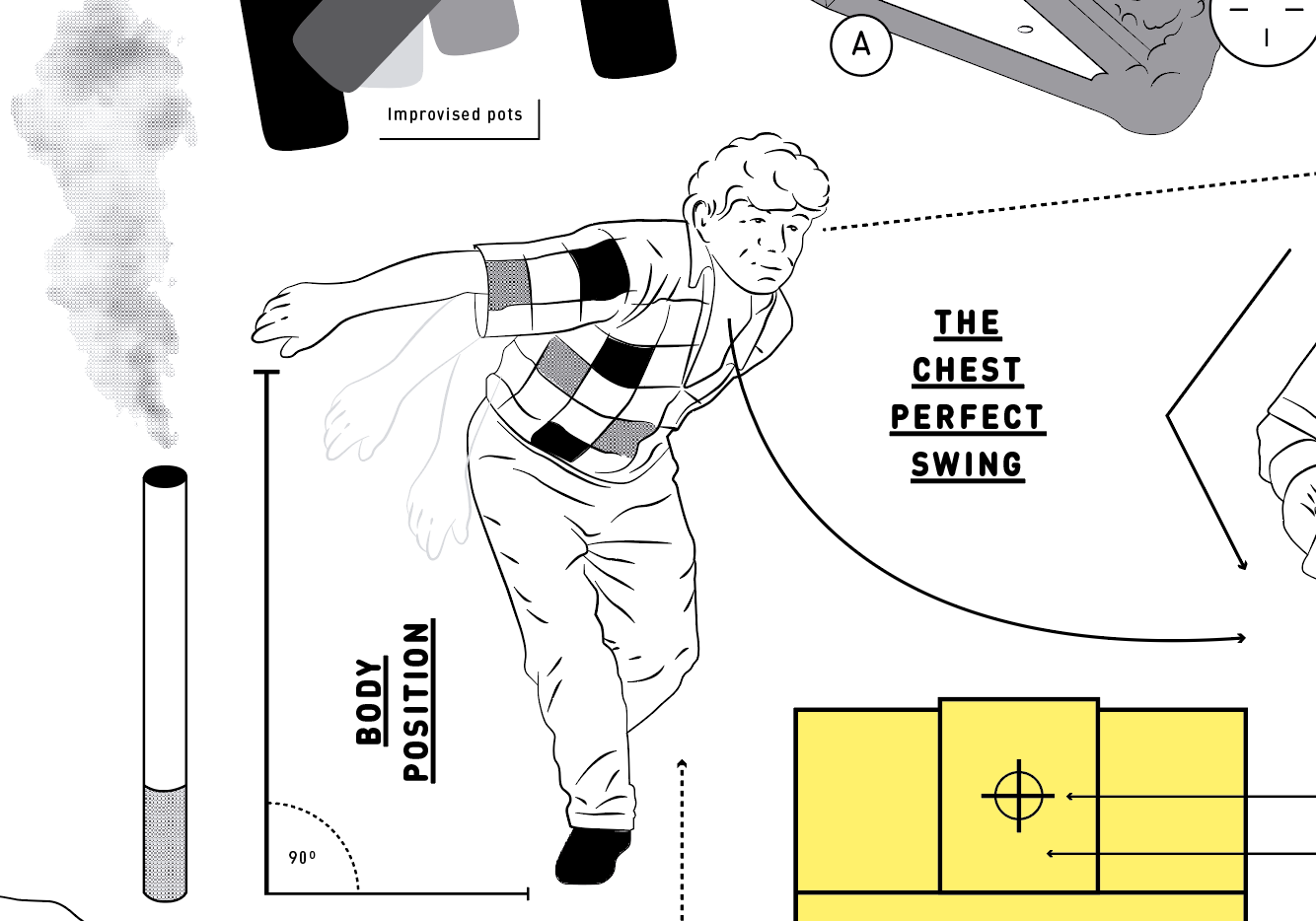




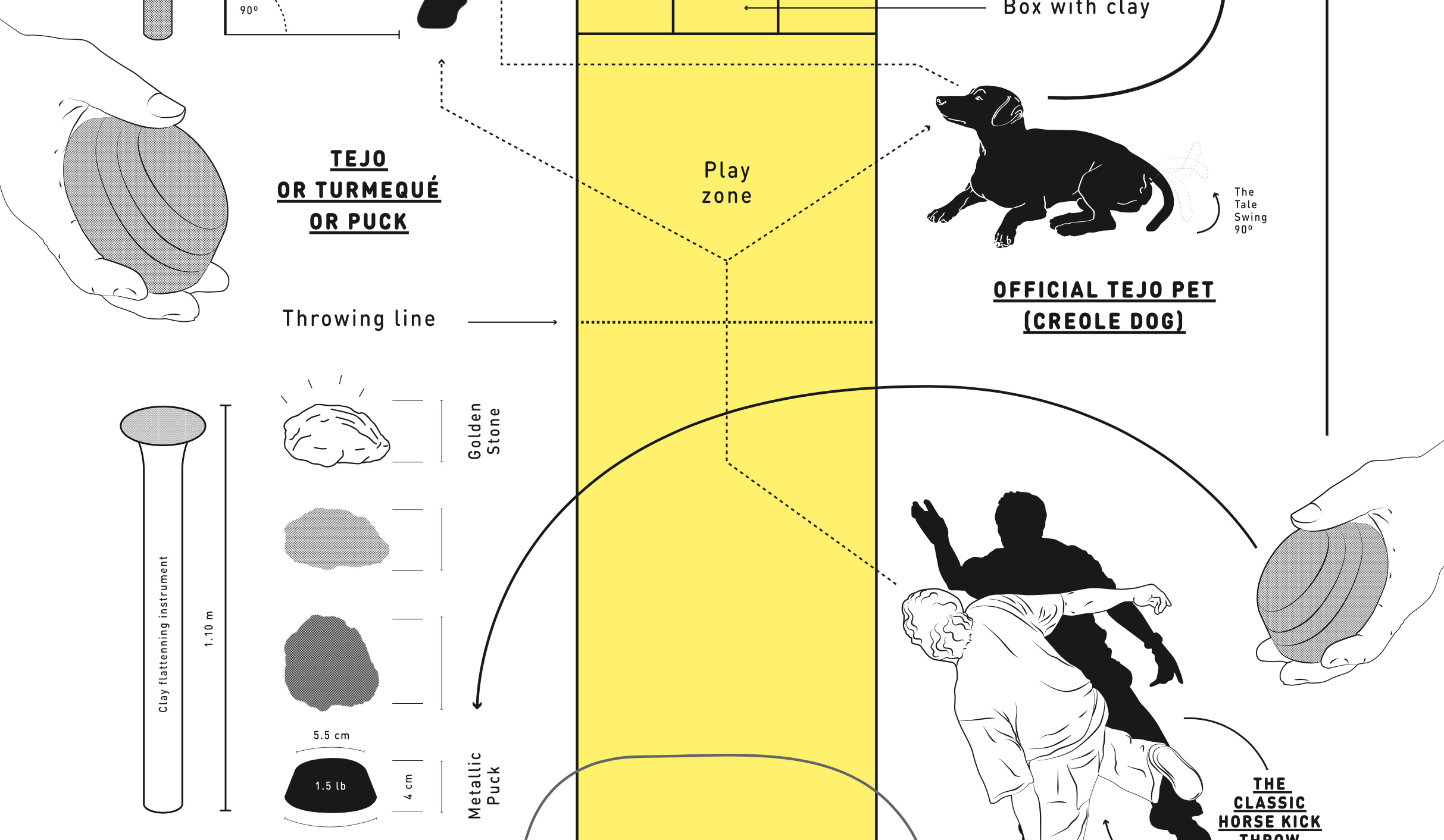




Sports are a reflection of the way societies function and provide a way to understand subtle and untranslatable concerns about cultural belonging and citizenship. Tejo, the national sport of Colombia, where I claim citizenship, is a good example to explain these issues and to understand some related paradigms. By reading sports and games as a model of the ways we come together, we can begin to see paradigms of larger systems. We have built and developed rules, values, right and wrong behaviors, structures, tools and boundaries that, in theory, could produce fair play and establish an even ground to live on and interact with each other. But often these structures and laws constitute limits, walls, competition, strata, market unfairness, and obstacles for spontaneous interaction. This project is composed of two parts, a site-specific playground made in my studio in SAIC, and a geometric model to understand the contradictions and ironies behind Tejo, a Precolumbian game as well as a modern sport.
SAIC
SAIC





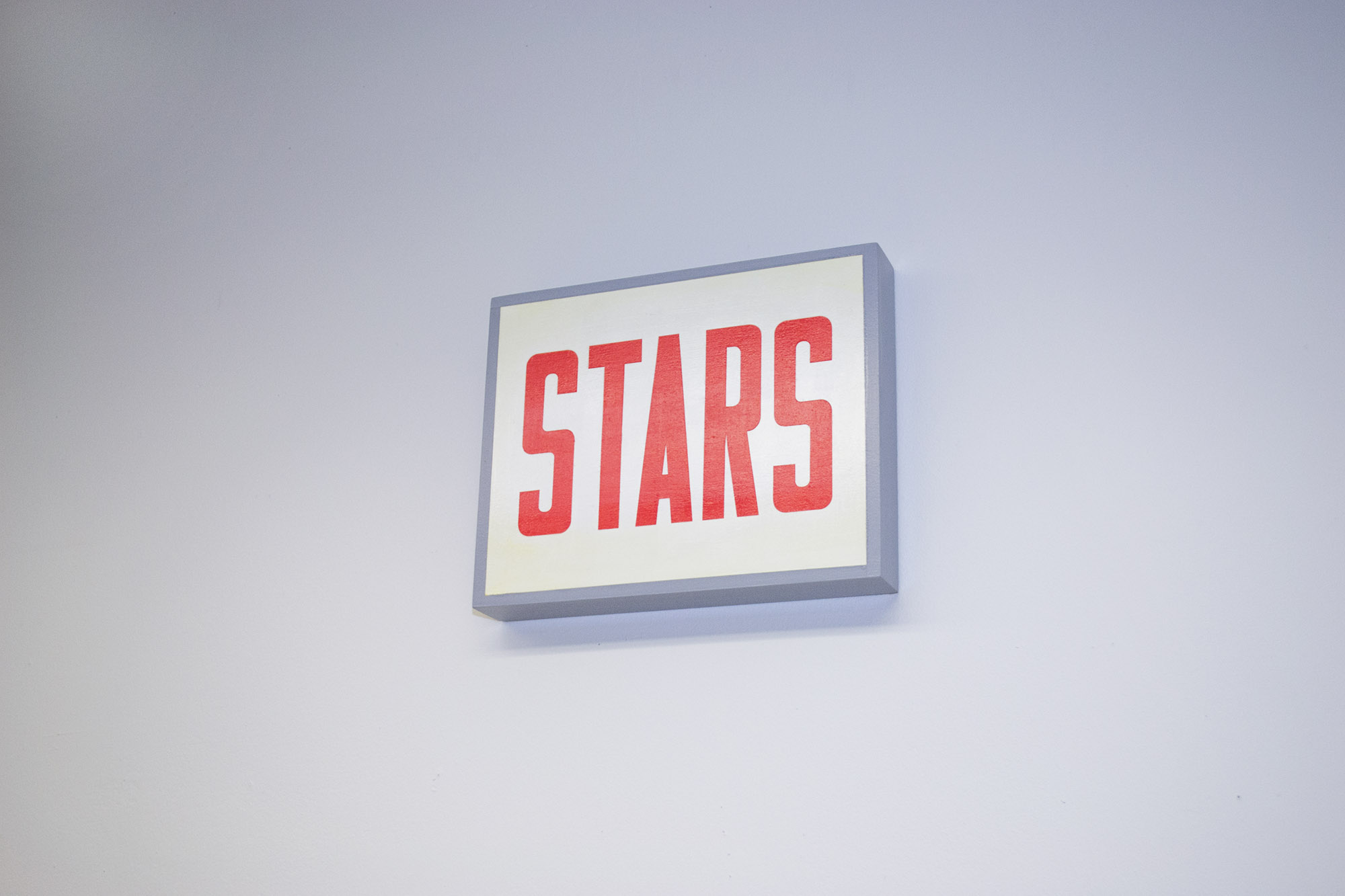



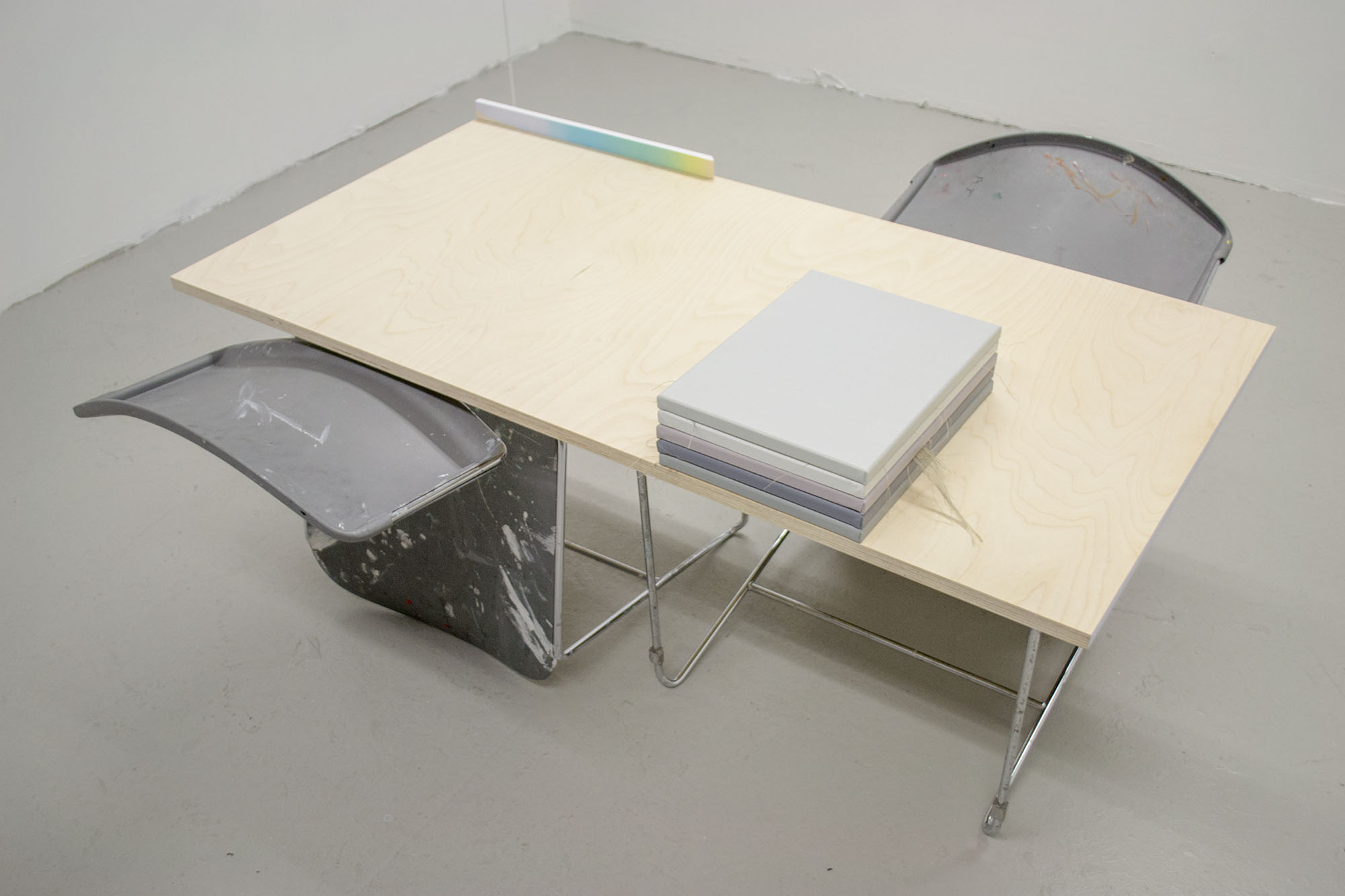



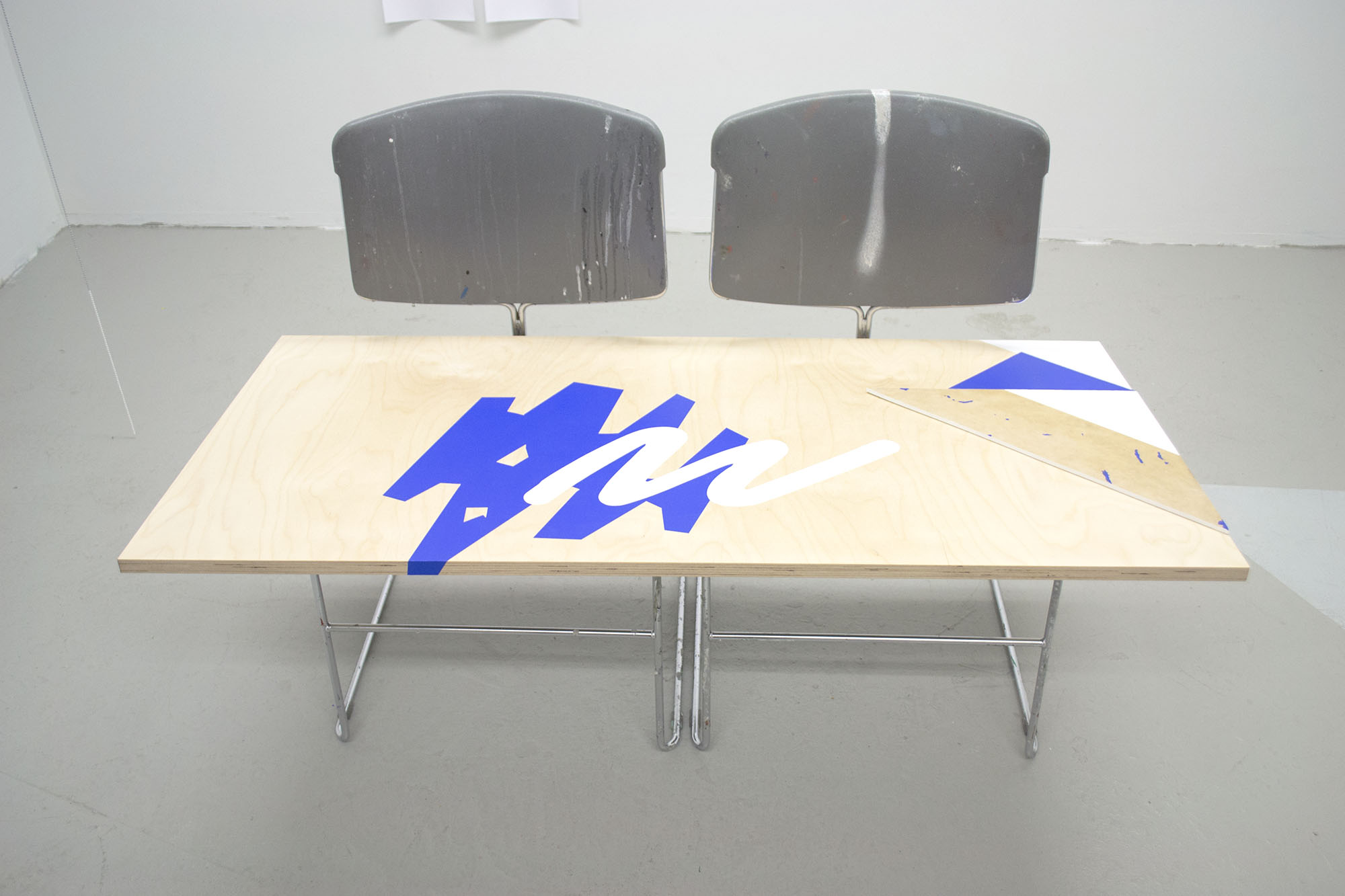









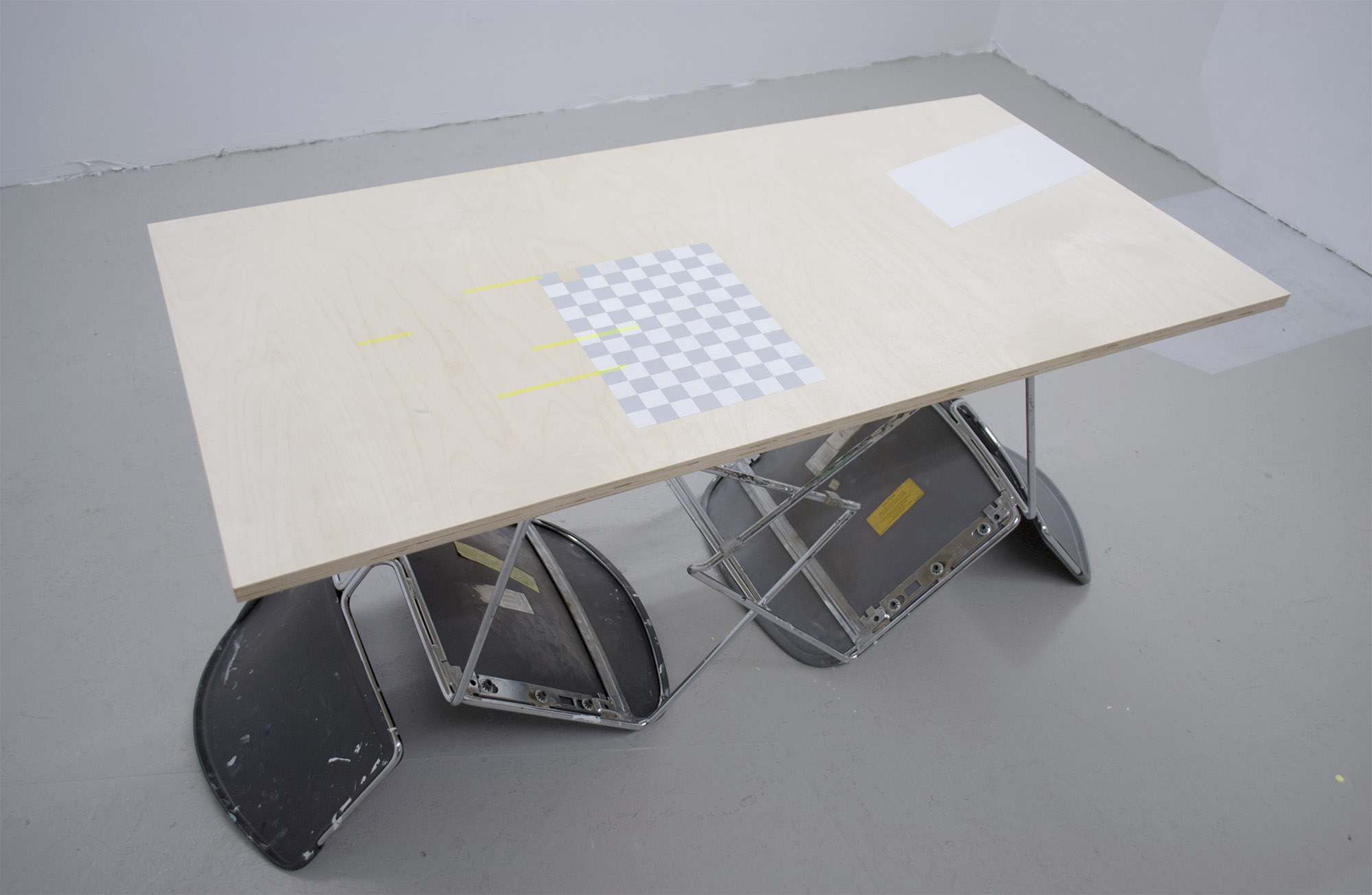

















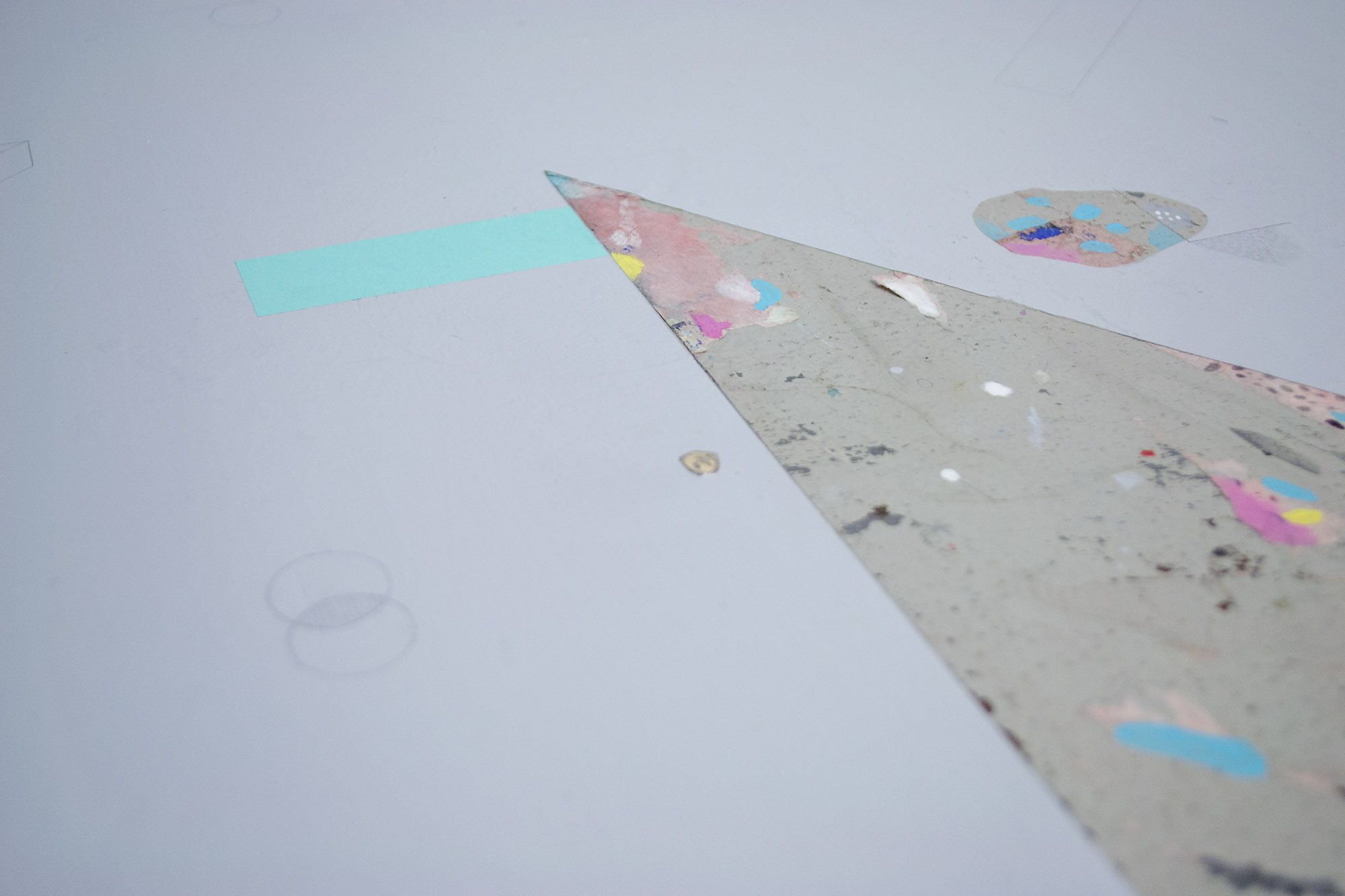














In 1998, the philosophers Andy Clark and David Chalmers wrote the paper The Extended Mind in which they explain, and demonstrate, how our interaction with objects, persons and the environment, is essential to shape and build our cognitive capacities as well as our thinking. That is the reason why we use certain tools (e.g. pencils, hammers, keyboards, or notebooks) as an extension of our body and mind. Going further, and that’s the way I see the development of this same theory, one could even think that those links between the brain (interior) and the materiality of the world (exterior), become like invisible energies that impact our behaviors and destiny. Possible proof of this is, for example, how the changes introduced by Rousseau in the French education around 1762 were one of the reasons that triggered avant-garde movements; Also how the Russian Constructivist logics were essential for their revolution or the way the Montessori system allowed a new understanding of learning, just to name a few cases of study that connect with my ideas. This can also be found in mathematical logic in the form of thought experiments (e.g. Schrödinger's Cat or Maxwell's Demon).
In that sense, this project is a cycle (sixteen weeks) of very basic self-exercises in the studio, devoted to give form to the understanding of those ideas and discover the boundaries of my mental processes as a student. In parallel, I convinced myself of a statement (about not being radical but instead kind) and I designed a short book with images and reflections made during this period and which gave the name to the project: Six Subtitles/Sixteen weeks.
SAIC
In that sense, this project is a cycle (sixteen weeks) of very basic self-exercises in the studio, devoted to give form to the understanding of those ideas and discover the boundaries of my mental processes as a student. In parallel, I convinced myself of a statement (about not being radical but instead kind) and I designed a short book with images and reflections made during this period and which gave the name to the project: Six Subtitles/Sixteen weeks.
SAIC